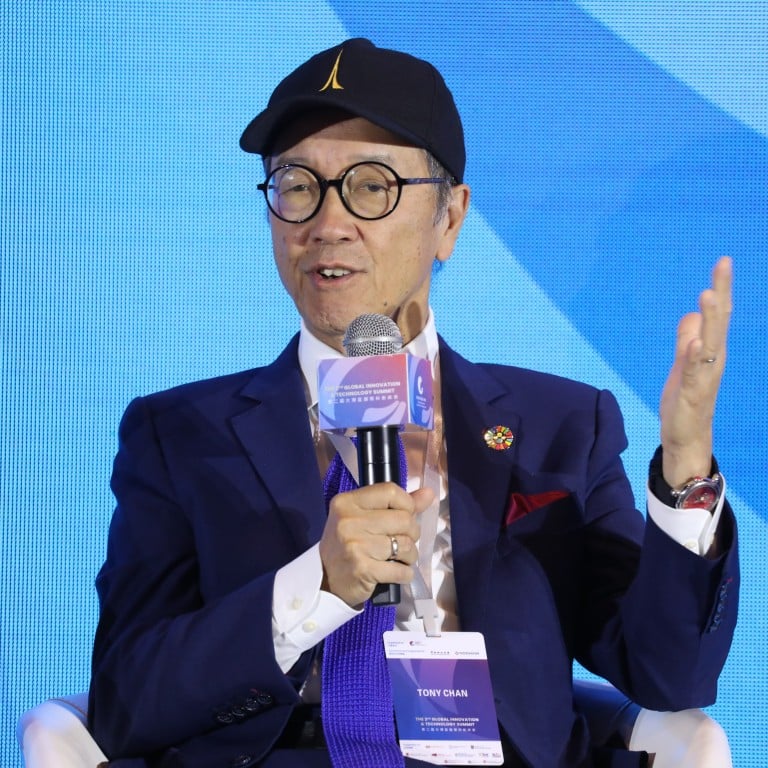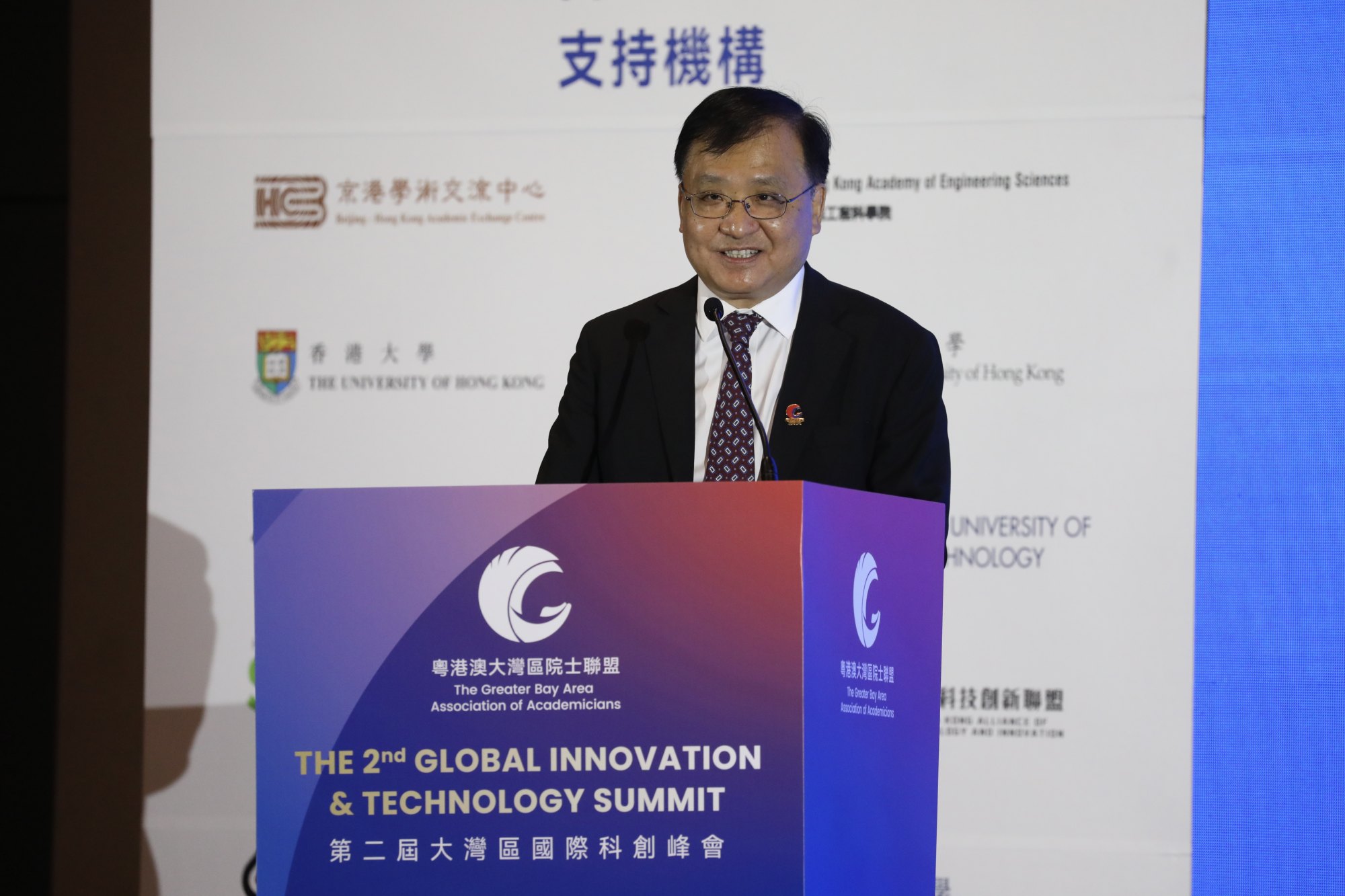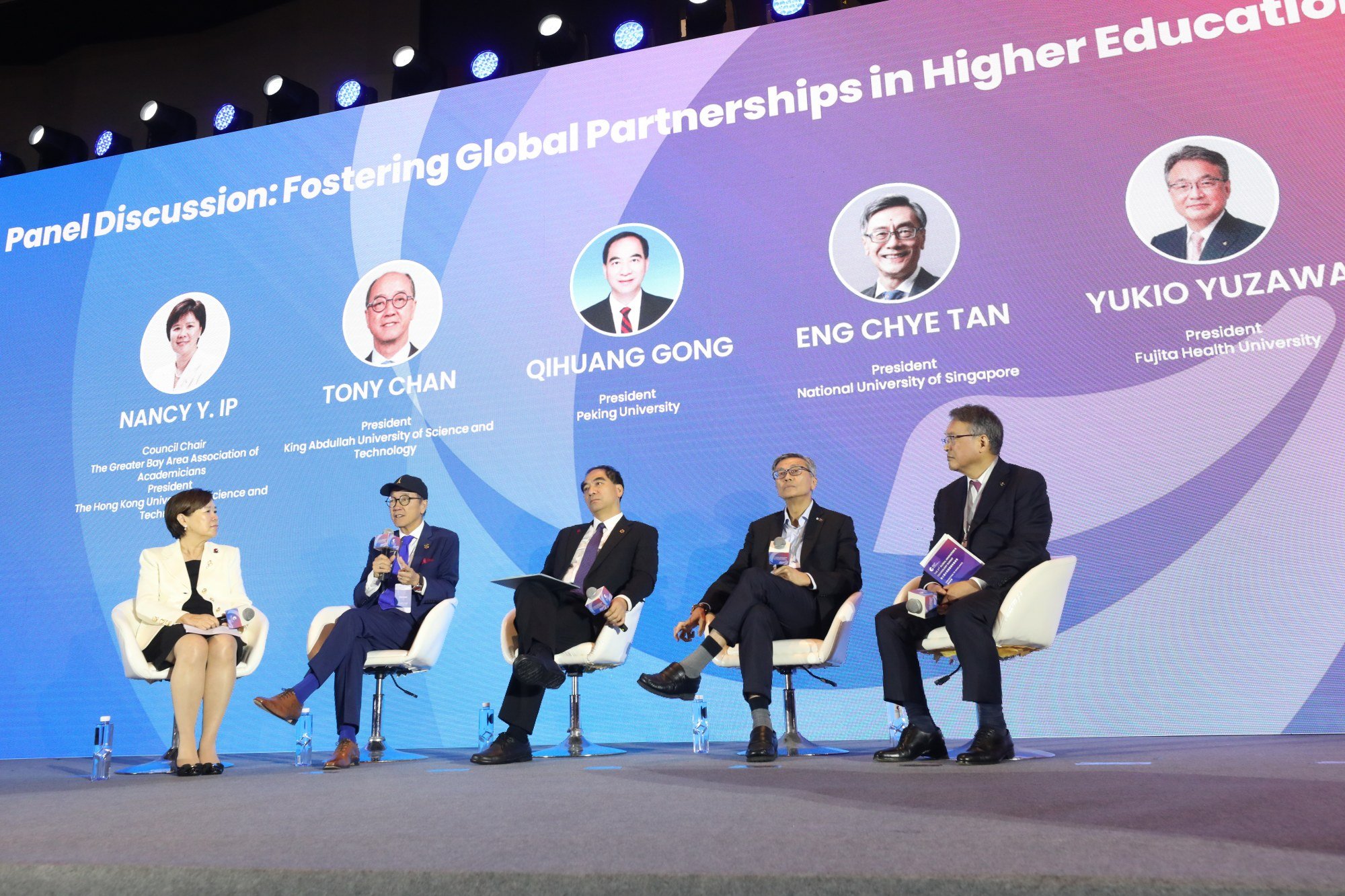
World’s top universities look to Hong Kong and rest of Greater Bay Area to foster innovation and technology talent
- Universities from around the globe examine collaborations with research and education institutions in the Greater Bay Area
- Global Innovation and Technology Summit in Hong Kong brings together government officials, academics from city, mainland China and overseas
Tony Chan Fan-cheong, president of Saudi Arabia’s King Abdullah University of Science and Technology (KAUST), said on Wednesday his university had set up an innovation centre in Shenzhen a few months ago as part of the “strategic plan of KAUST”.
“The idea is to bring the KAUST people of Saudi Arabia to Shenzhen to learn about the ecosystem – you cannot teach this on paper, you have to go there,” he said. “And hopefully they will bring something back to grow the ecosystem.”

Chan, a former president of the Hong Kong University of Science and Technology (HKUST), said the decision was well-received and KAUST had built partnerships with several institutions, including Shenzhen’s Tsing Hua University research institute and graduate school.
“In the next 10 years, where will be the major centres for science and technology?” he asked. “US and China. We are in the Middle East or West Asia, and we’ve got to hedge our bets, we’ve got to be invested.”
Chan added that many Saudis could speak fluent Chinese and highlighted that the country’s high schools were required to teach two hours of Chinese a week.
He was speaking as university presidents on Wednesday gathered for the second Global Innovation and Technology Summit in Hong Kong on Wednesday, organised by the Greater Bay Area Association of Academicians.
The event at the Hong Kong Science Park in Pak Shek Kok brought together dozens of senior government officials and academics from Hong Kong, mainland China and overseas to discuss how to boost I&T development through higher education.
The Greater Bay Area is Beijing’s plan to integrate Hong Kong, Macau and nine mainland cities into an economic powerhouse.
Hong Kong and rest of Greater Bay Area pledge closer links 5 years into plan
Tan Eng Chye, the president of the National University of Singapore, said his institution had started to send students to Silicon Valley and other innovation hotspots around the world for internships in 2002 to increase the exposure of its students to entrepreneurship.
“When you talk about research and innovation, industry has to come in,” he said.
The university has also sent students to the mainland, including Shanghai, Beijing and Shenzhen, with Guangzhou to be added to the list of about 20 places to increase their exposure to the bay area.
Tan added about 4,000 students who had gone through the programme had graduated in the last 20 years.
He said they had founded more than 1,100 companies and two of them had become unicorns – privately owned start-ups valued at more than US$1 billion.
“We have a very structured collaboration with industry to train our students and graduates, and they come back and build an ecosystem within Singapore,” Tan added.
Fang Jianming, the deputy commissioner of the Office of the Commissioner of the Ministry of Foreign Affairs in Hong Kong used the summit to highlight Chinese President Xi Jinping’s emphasis on “new quality productive forces”.
Regions ‘more connected than ever’ as China’s Greater Bay Area plan turns 5
“The economy counts on technology, the technology counts on talent and talent counts on education,” Fang said. “Amid the fierce competition for talent worldwide, Hong Kong should increase its attractiveness with even more preferential policies, a more solid foundation in the industry and a more diverse platform for innovation.”
Secretary for Innovation, Technology, and Industry Sun Dong underlined the city’s determination to expand its I&T talent pool, seen as crucial to the city’s development into an international hub for the sector.
Sun said better collaboration among government and the academic and research sectors was one of the key strategies required to reach the goal.
He also revealed that the research, academic, and industry sectors one-plus scheme, launched last October to encourage the commercialisation of research, had last week approved about 20 proposals out of 94 applications.

At a panel discussion titled “Shaping Hong Kong and the Greater Bay Area as an international education hub”, HKUST president Nancy Ip Yuk-yu acknowledged that her institution was facing a major challenge in ensuring effective communication between its Hong Kong campus in Clear Water Bay and the one in Nansha in Guangzhou, which opened in September 2022 as an independent legal entity.
“Finding a way to effectively communicate is critical because the [Nansha] campus is not in Hong Kong. It is two to three hours away from the Clear Water Bay campus,” Ip told the panel, noting her university was “really figuring out how to communicate the best.”
Panellist Rocky Tuan Sung-chi, outgoing head of the Chinese University of Hong Kong, noted there was a difference in the type of students his institution enrolled locally and at its campus in Shenzhen.
“The students we accept for our mainland campus are those who went through the gaokao … even though we have similar curriculum, the students are different,” he said, referring to the mainland university entrance exam usually held in June. “There is a different style of learning. We must be fully aware.”
University of Hong Kong vice-president Max Shen Zuojun said it was not “cost-effective” for every university in the city to establish a Greater Bay Area campus.
He suggested that universities in Hong Kong could form a team and establish two or three national labs somewhere near the border, which could help address Hong Kong’s shortages of space and equipment, as well as ease the burden on budgets and logistics.


